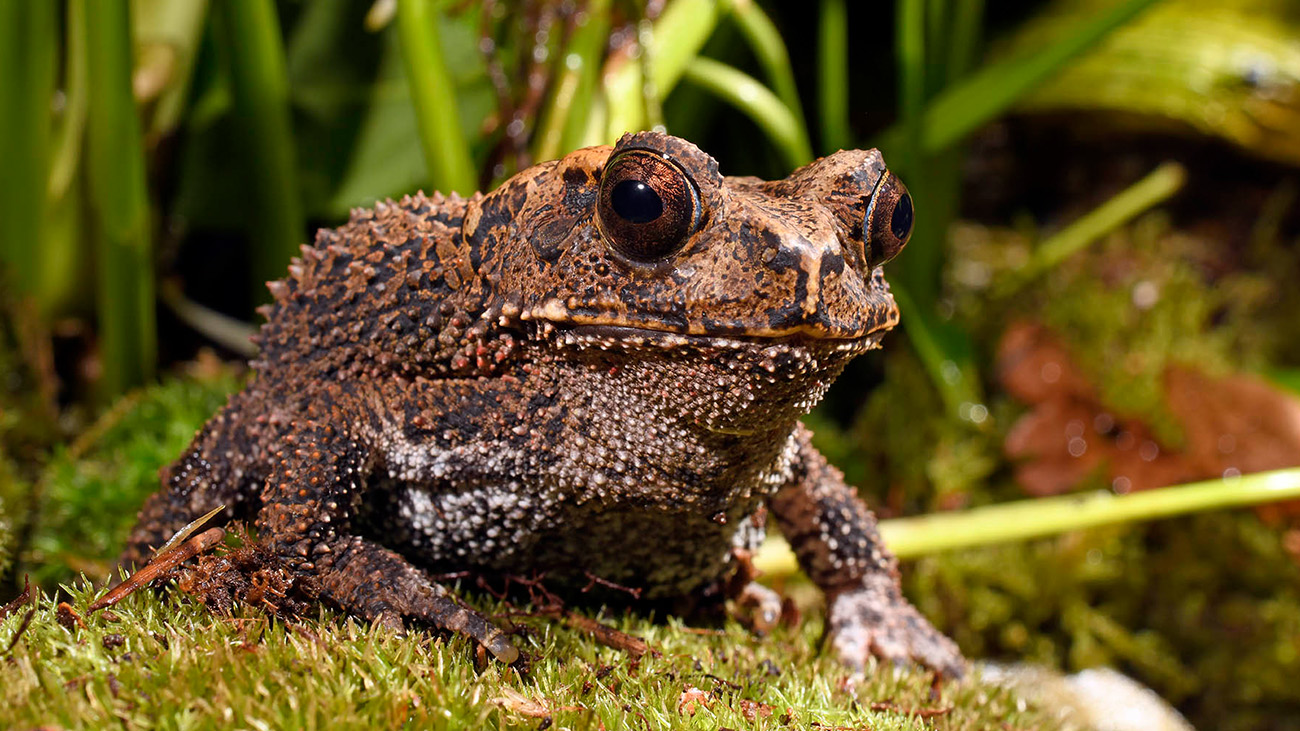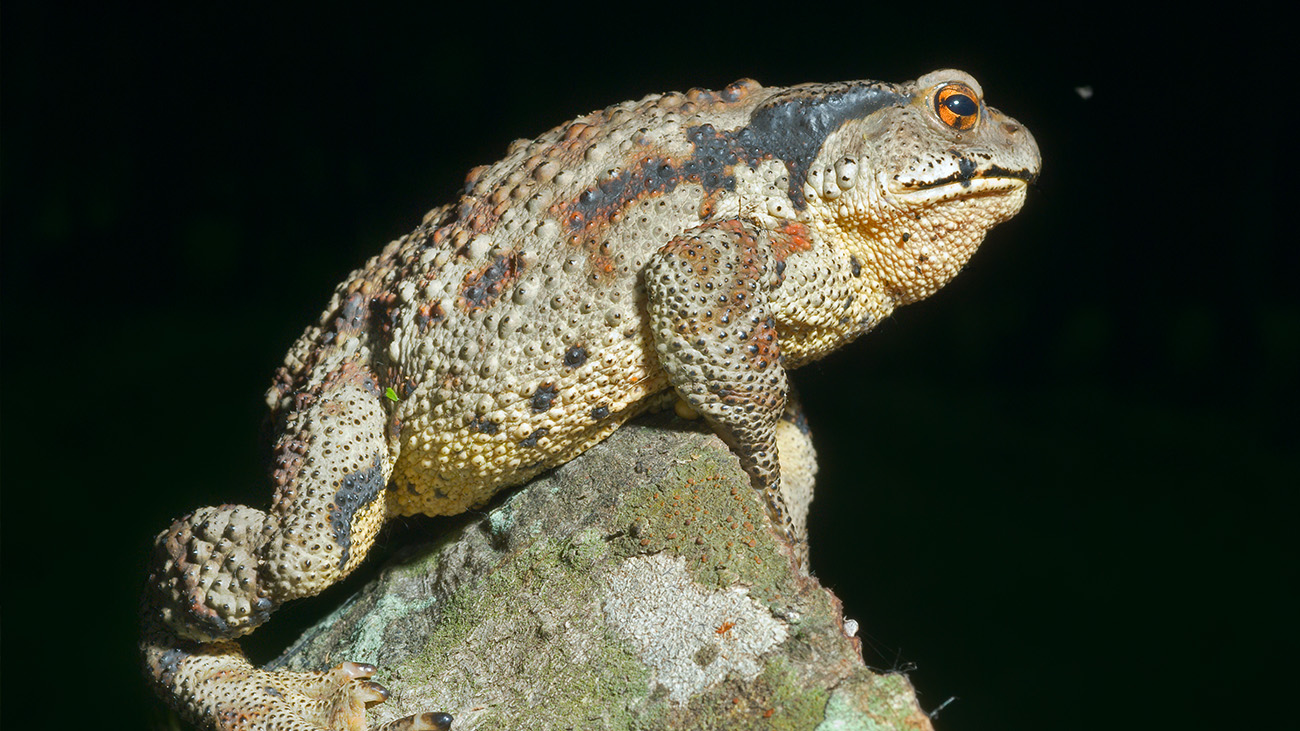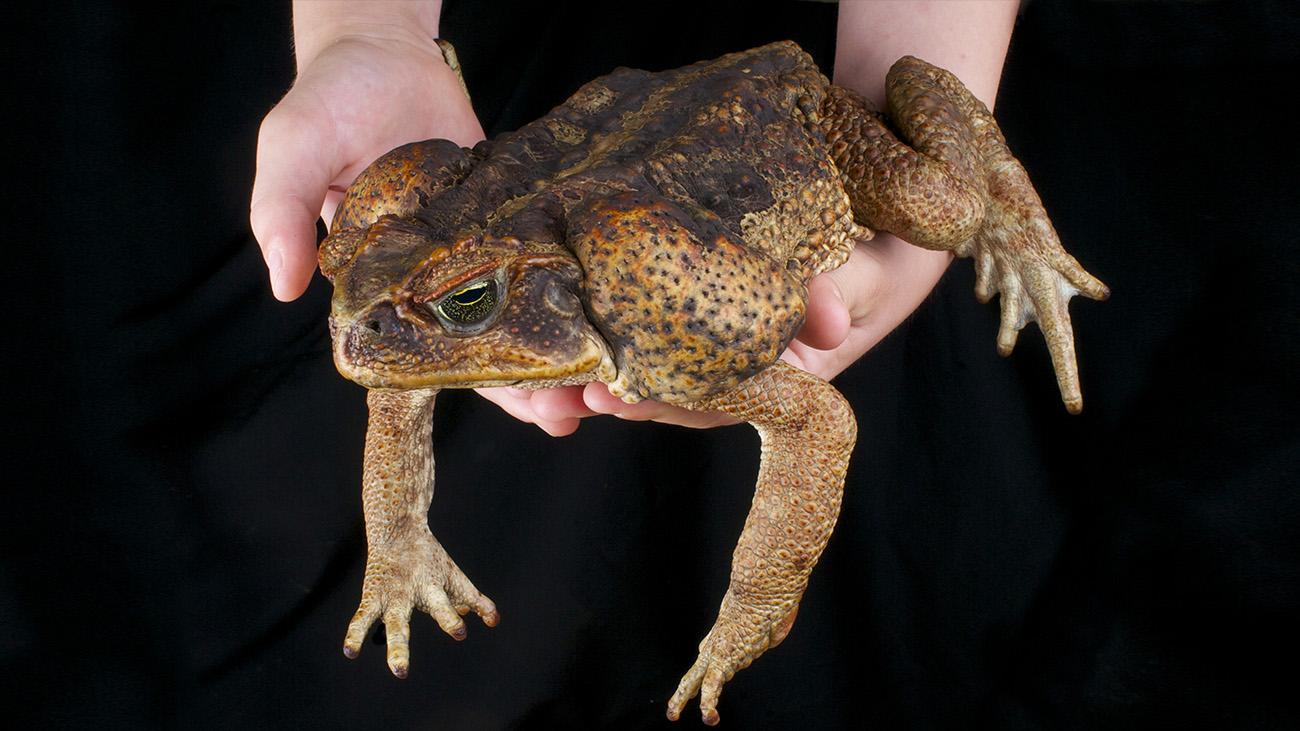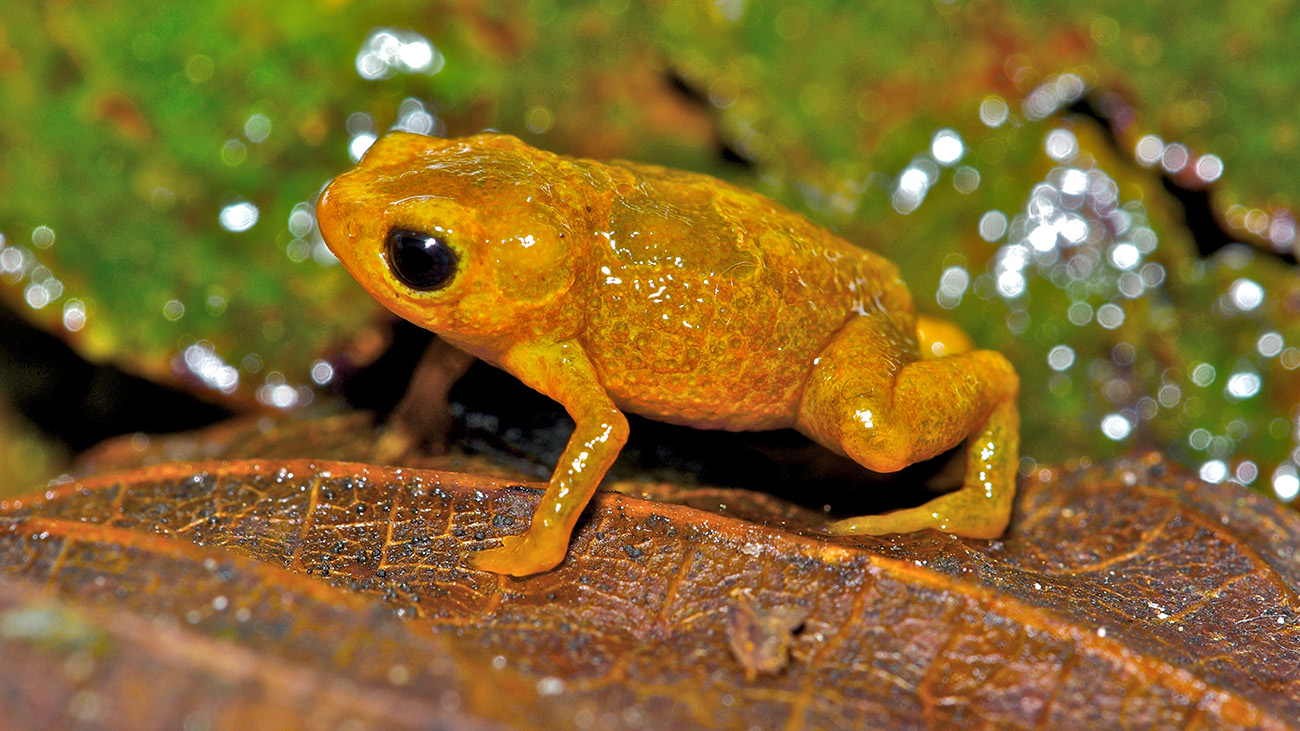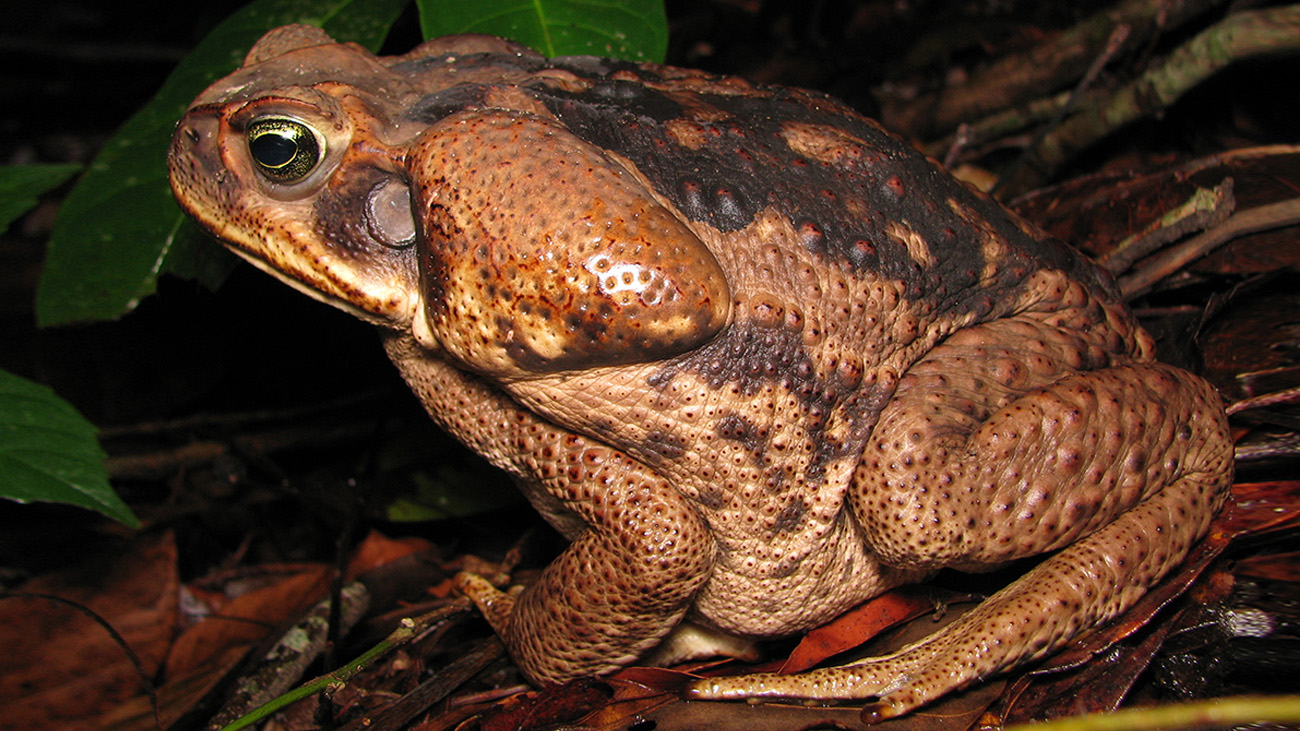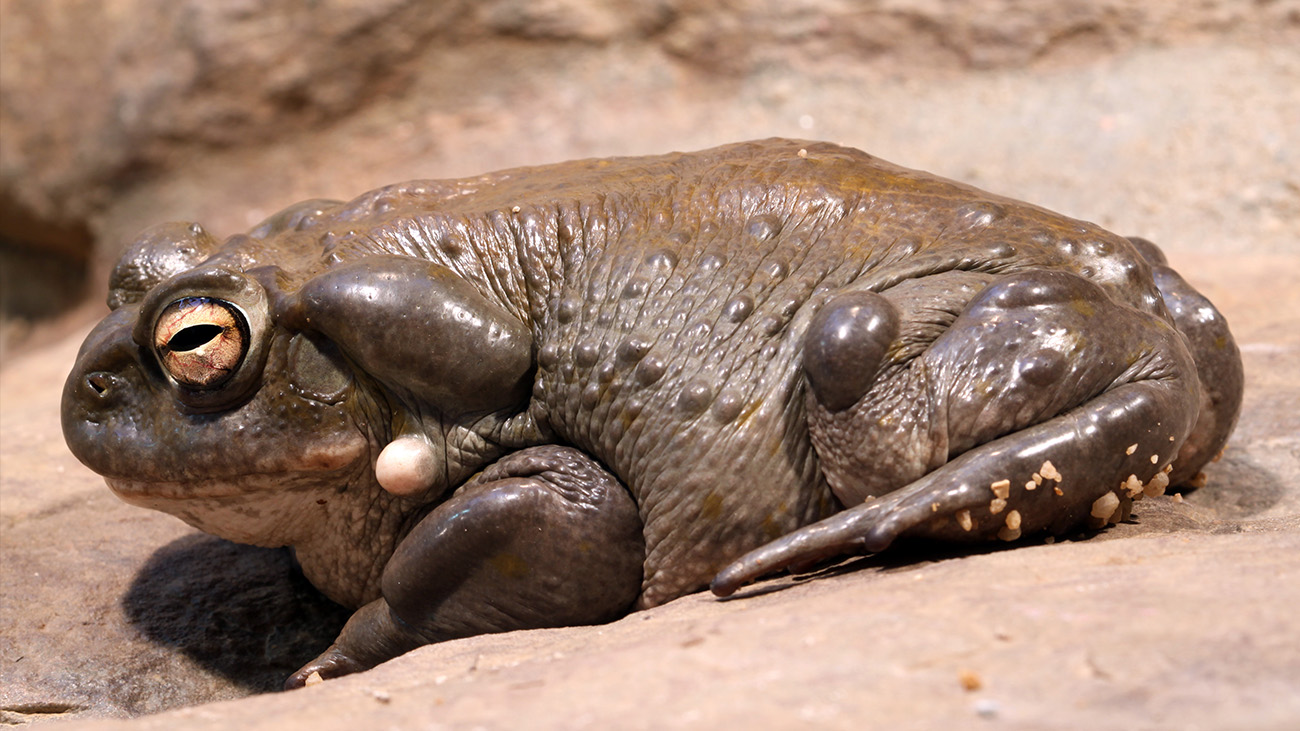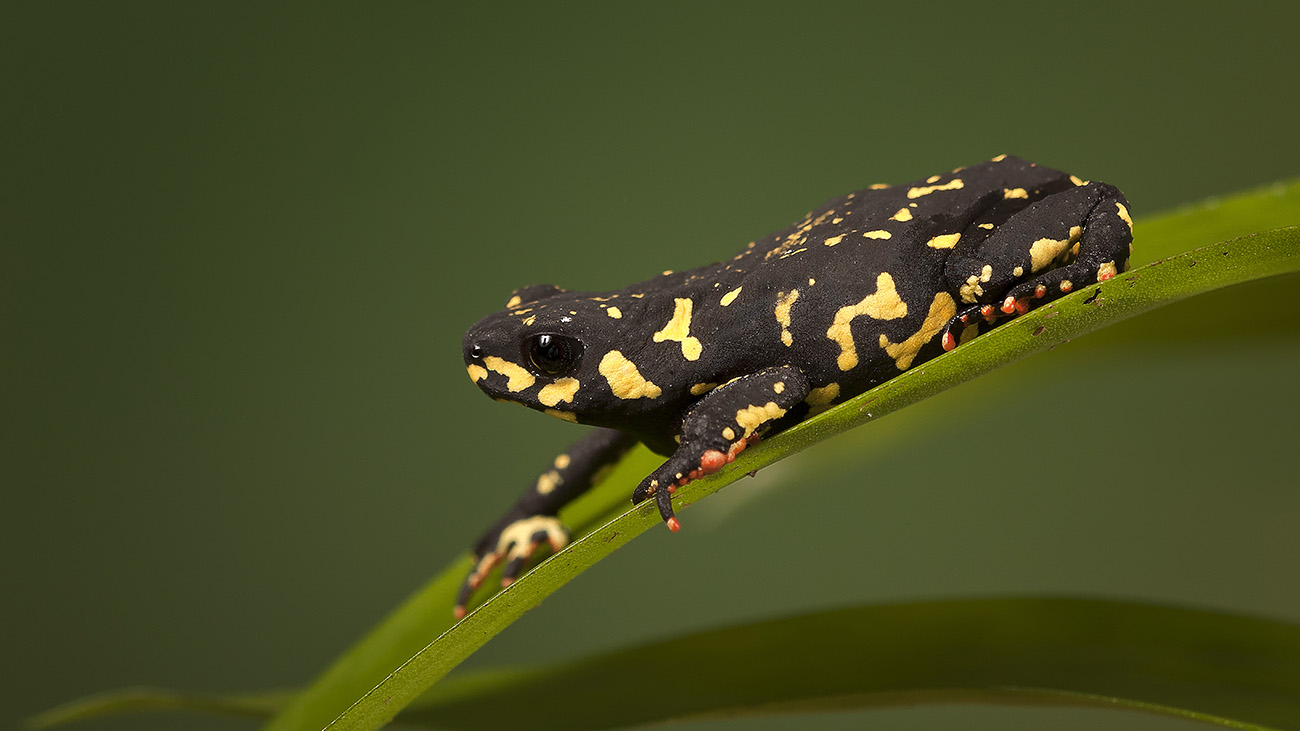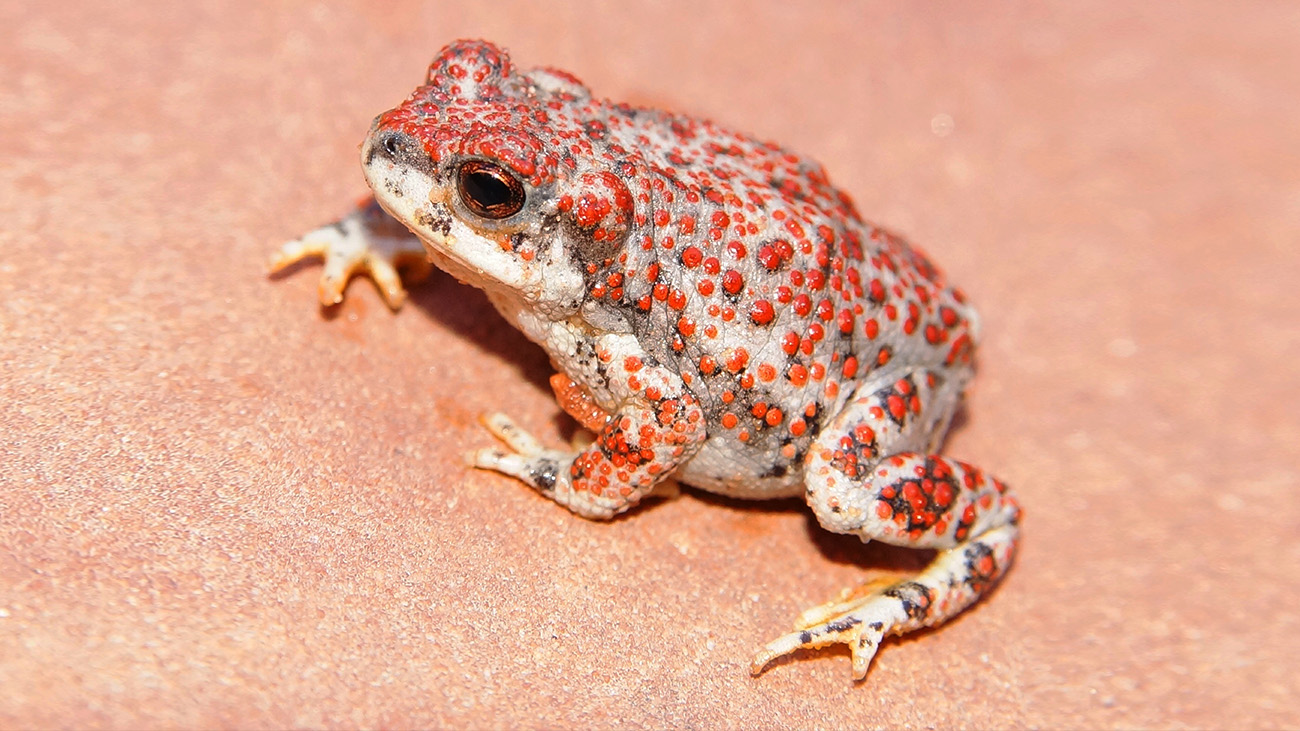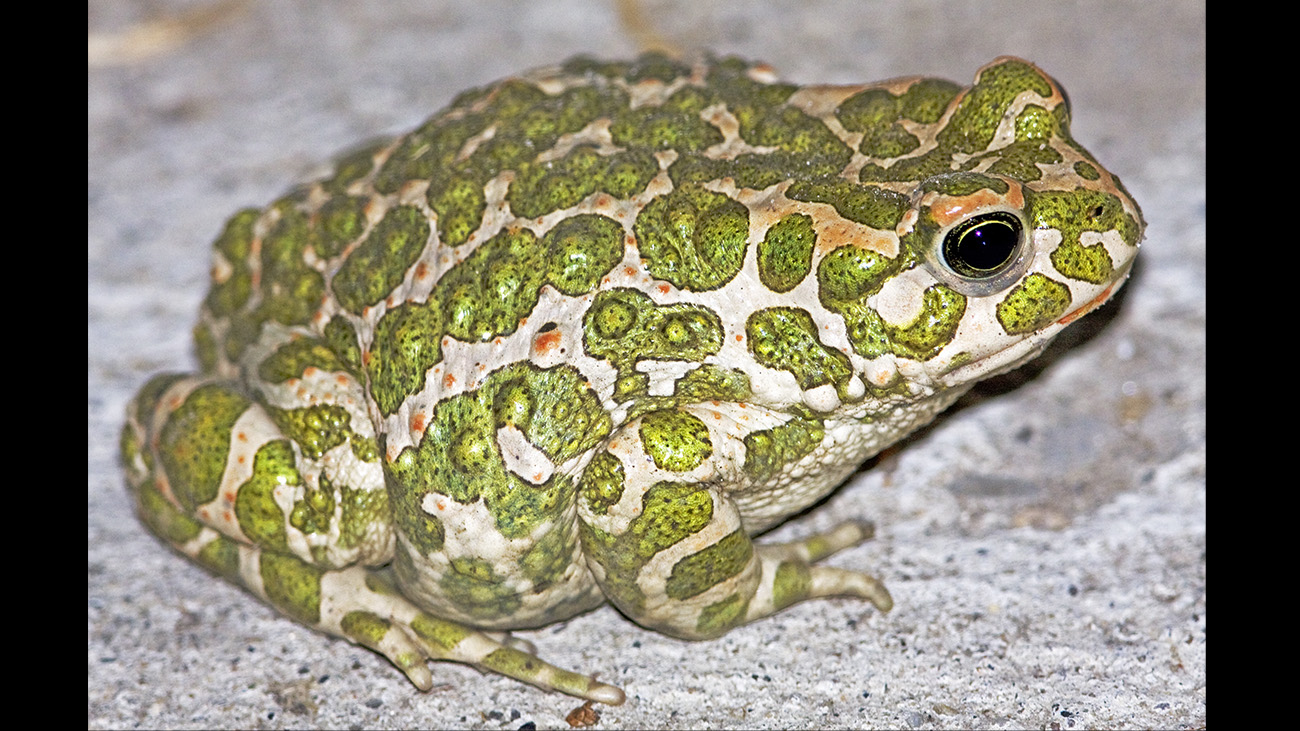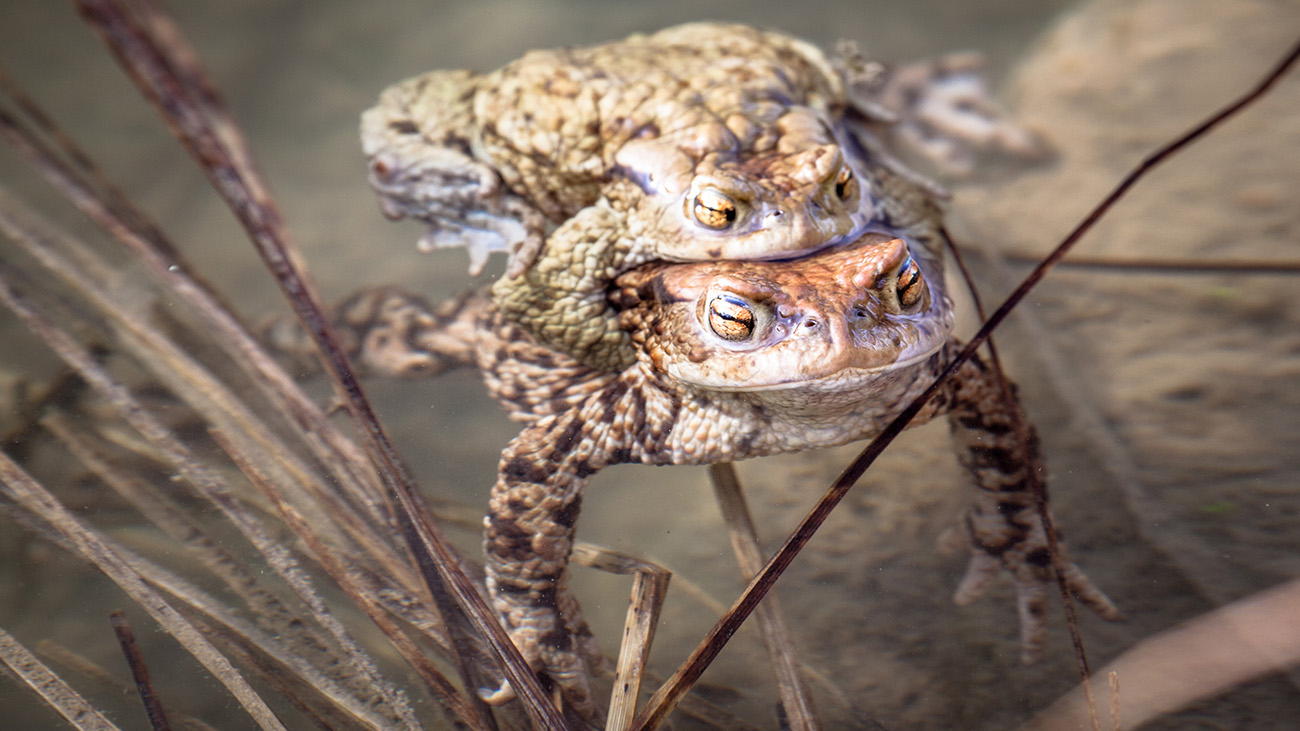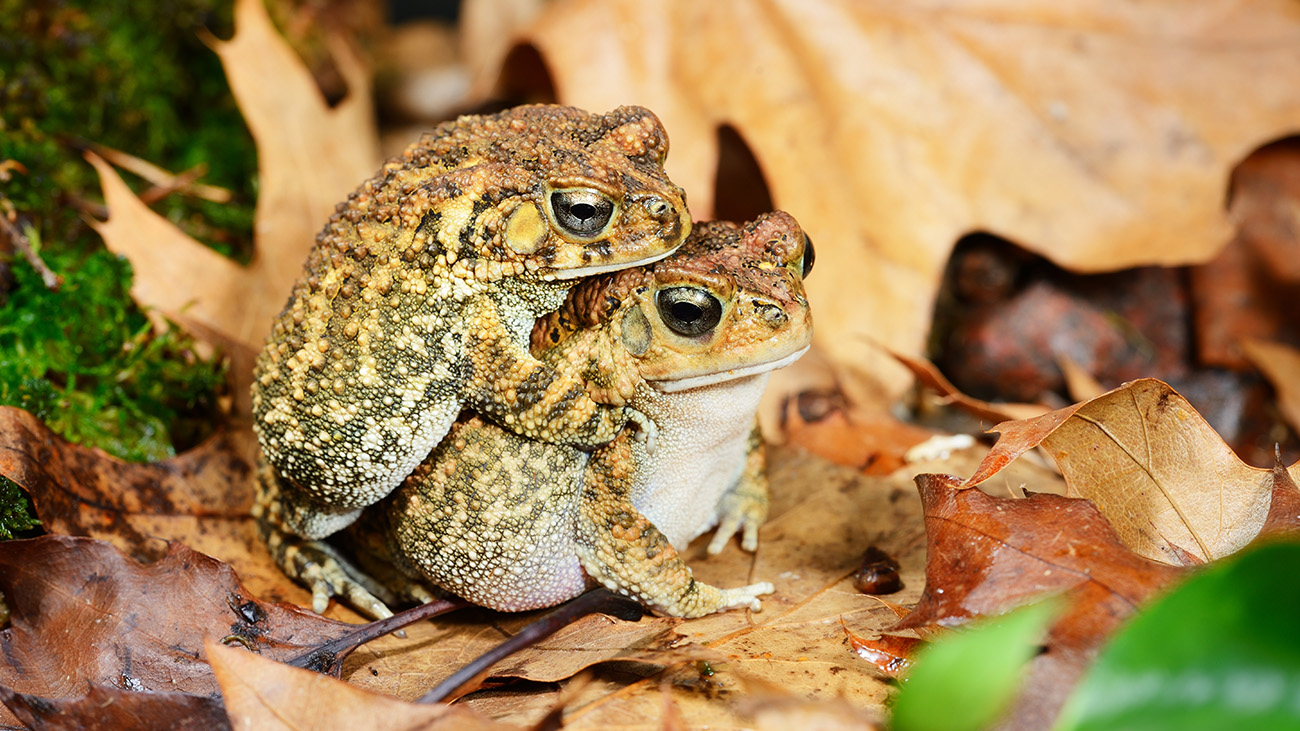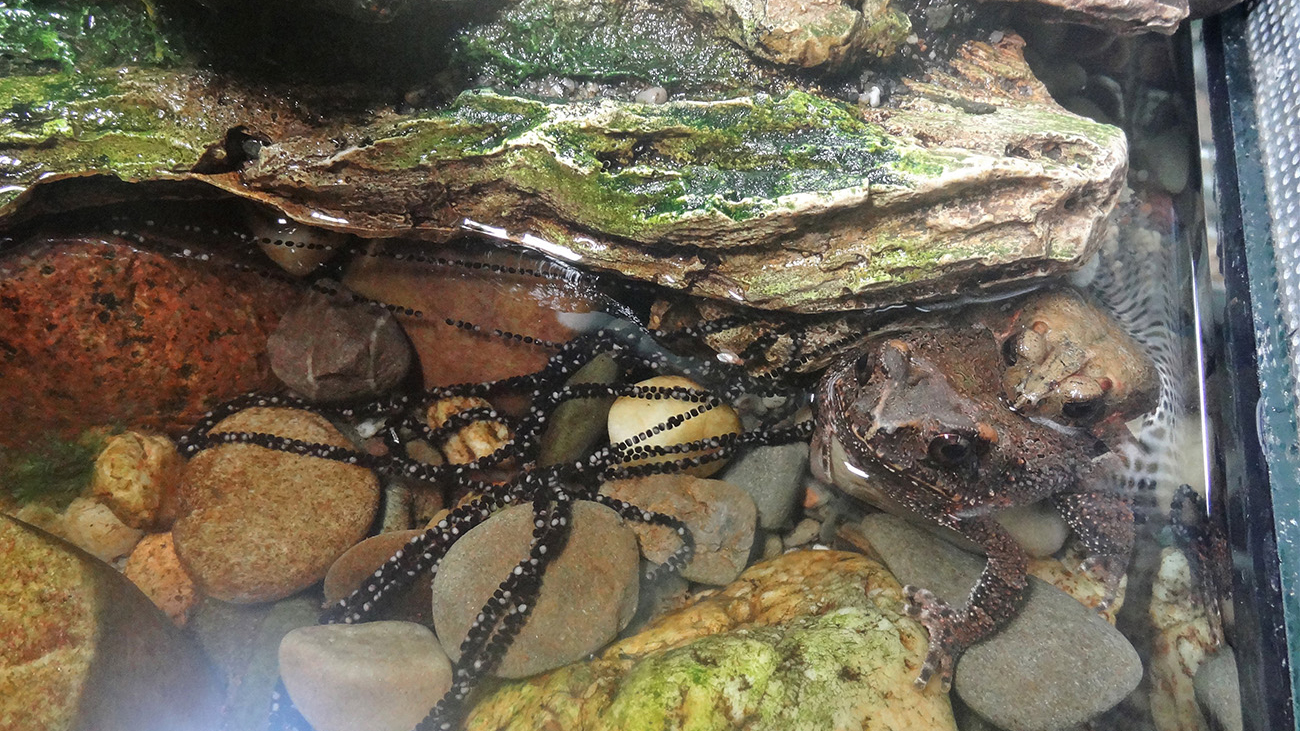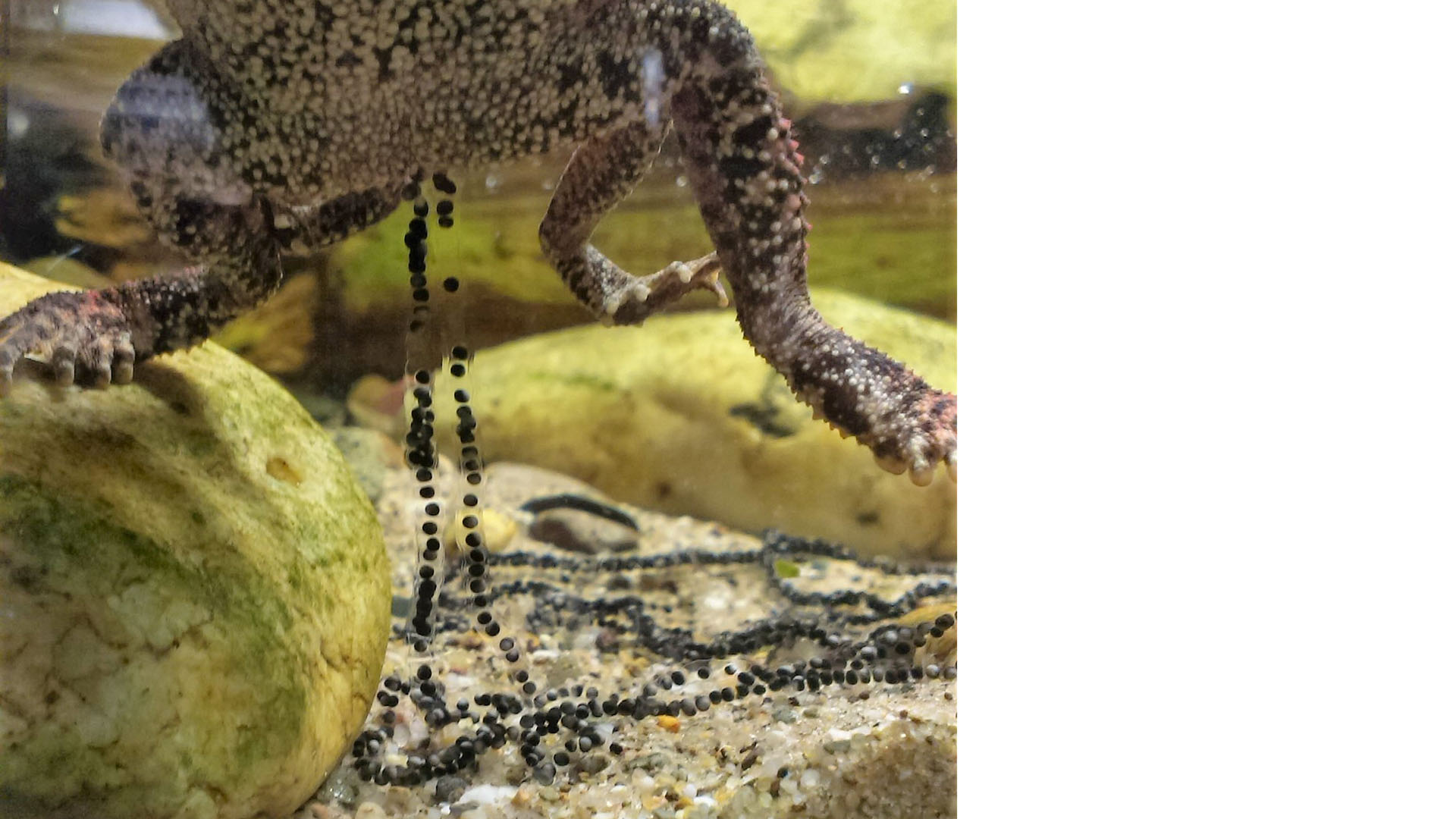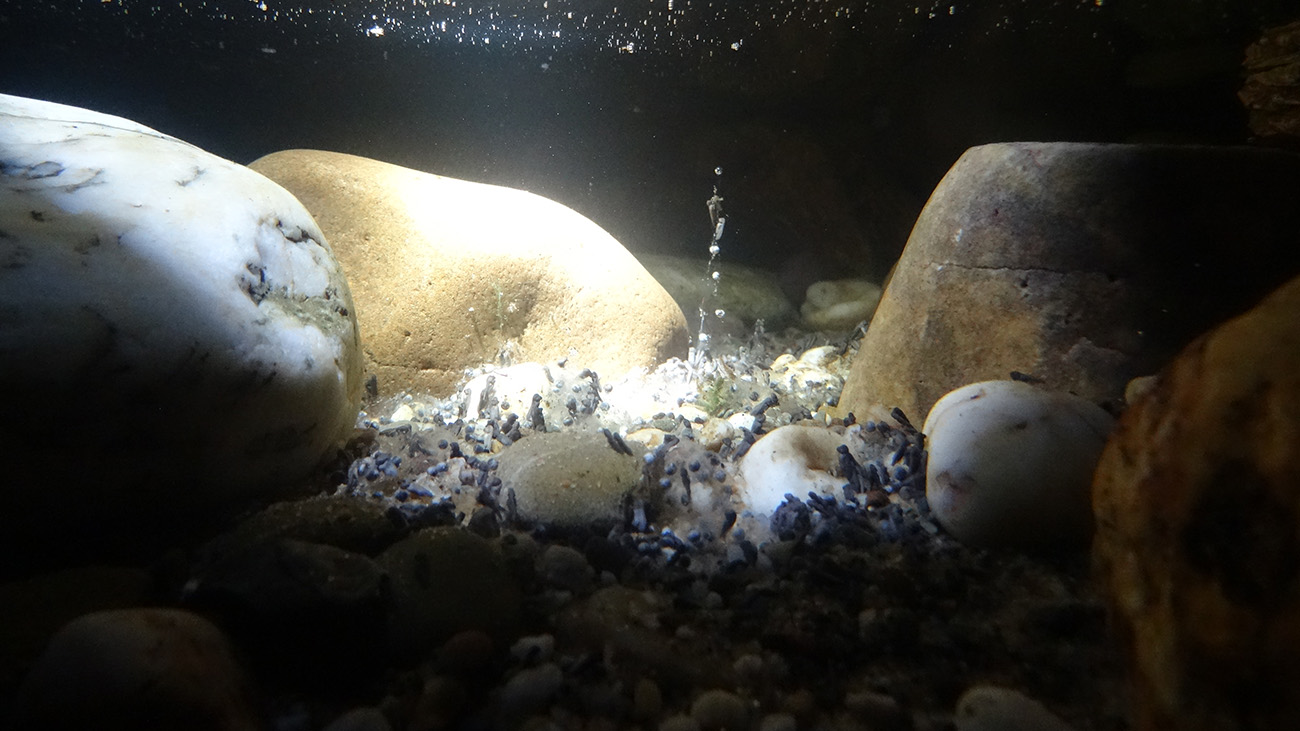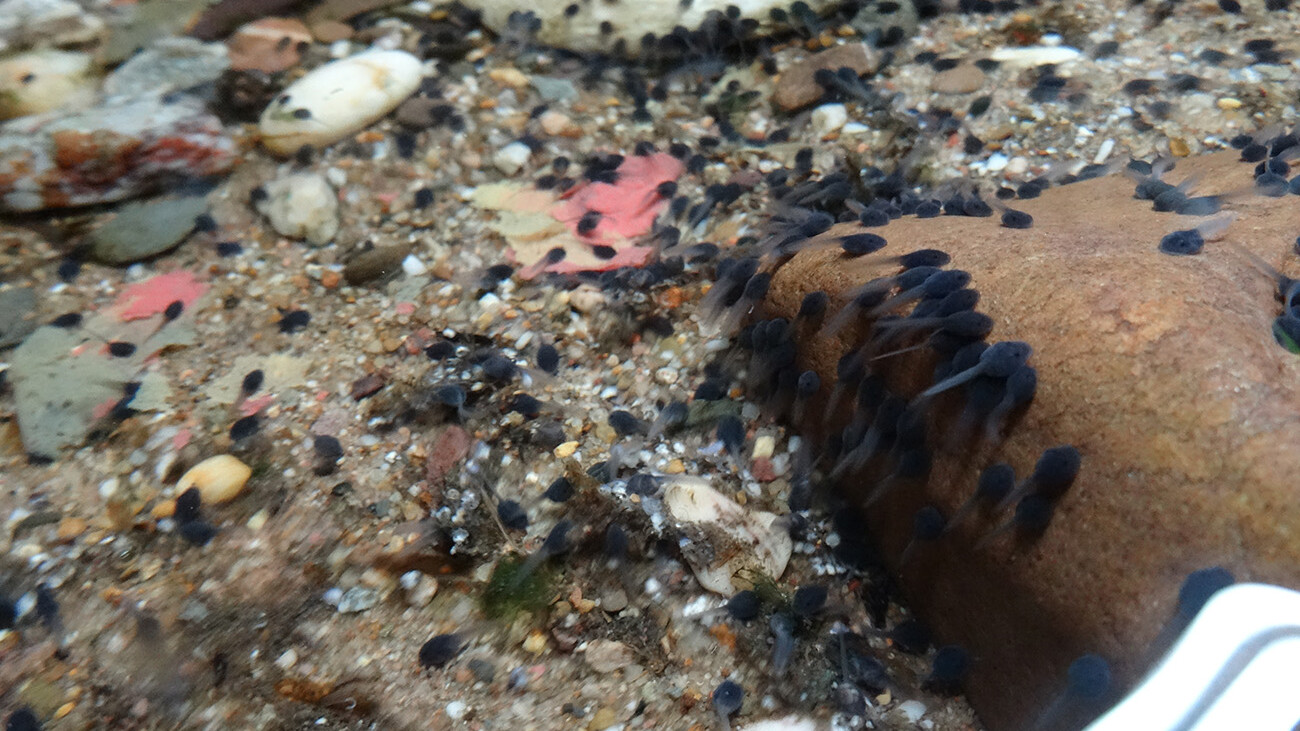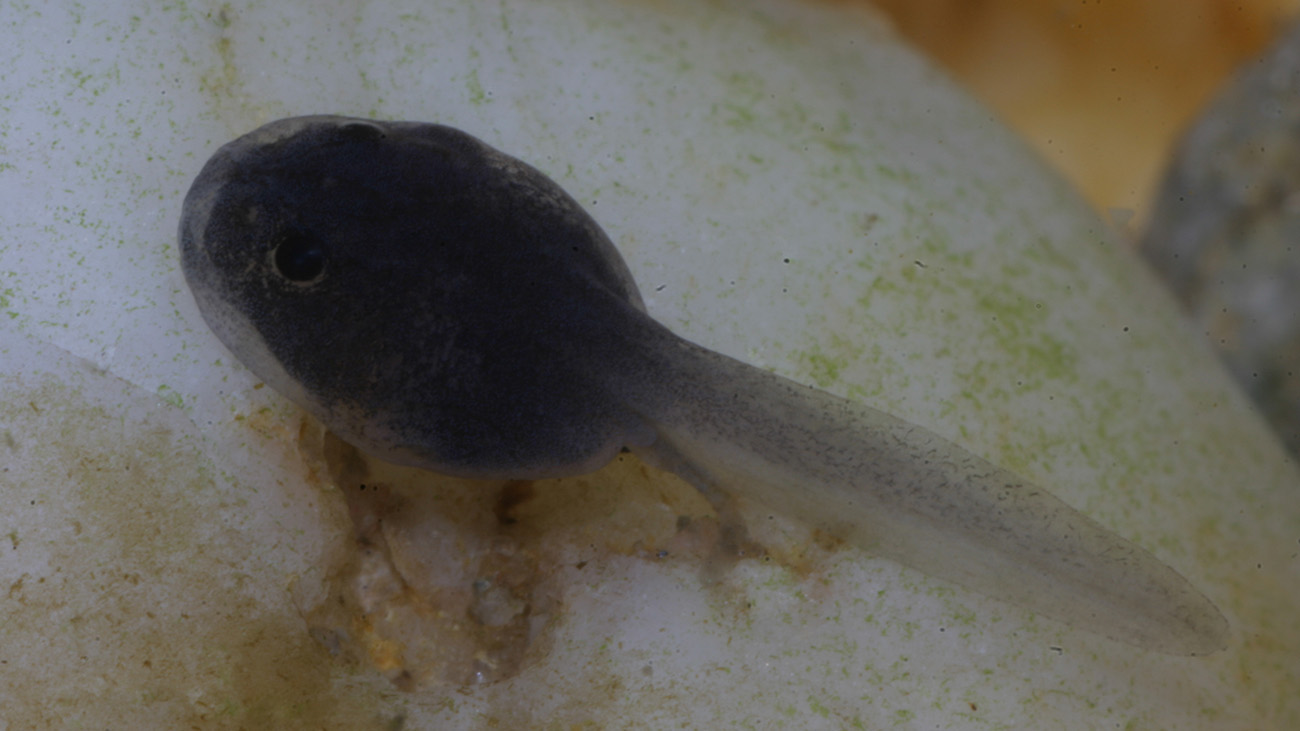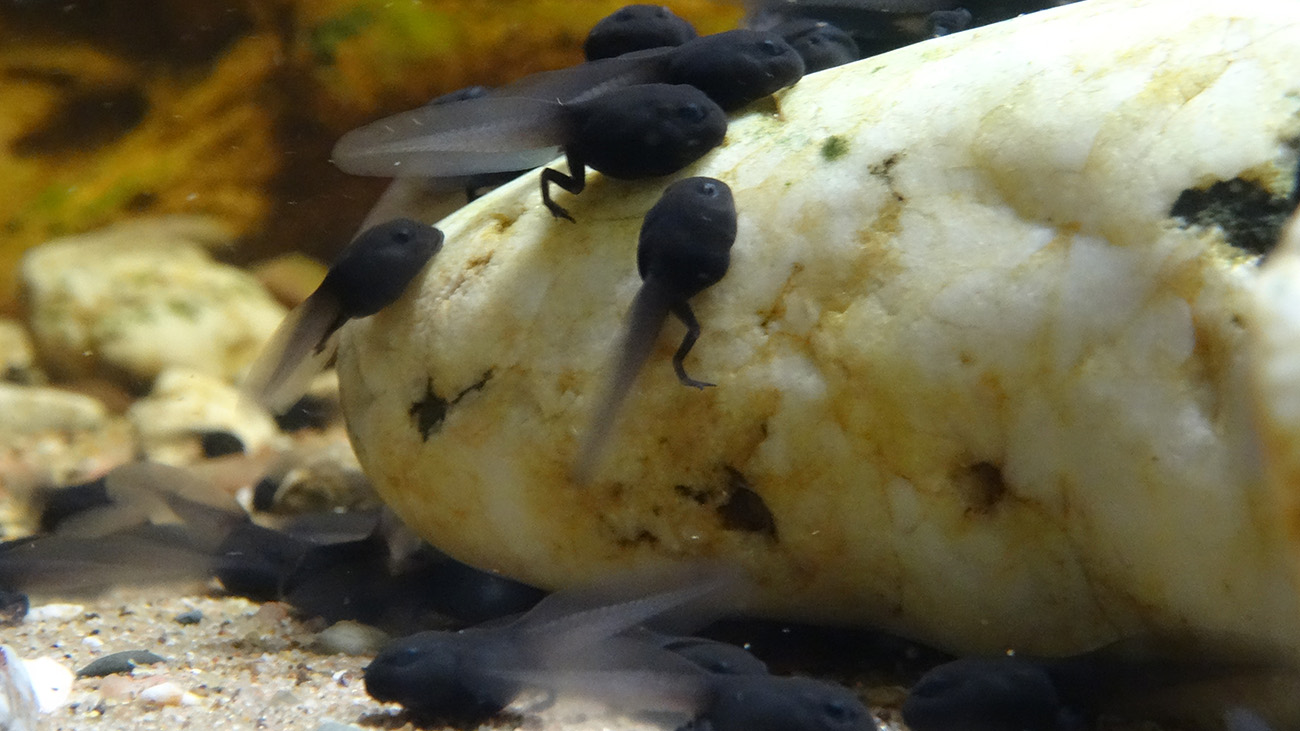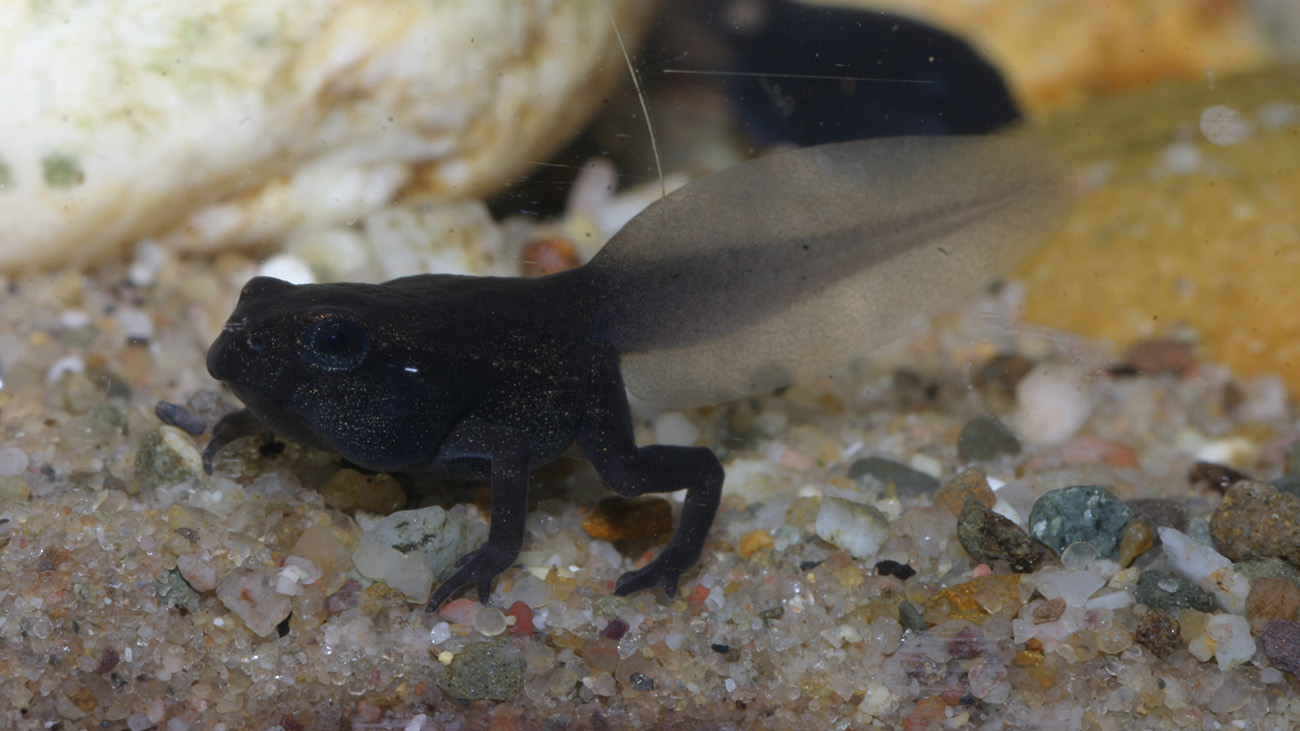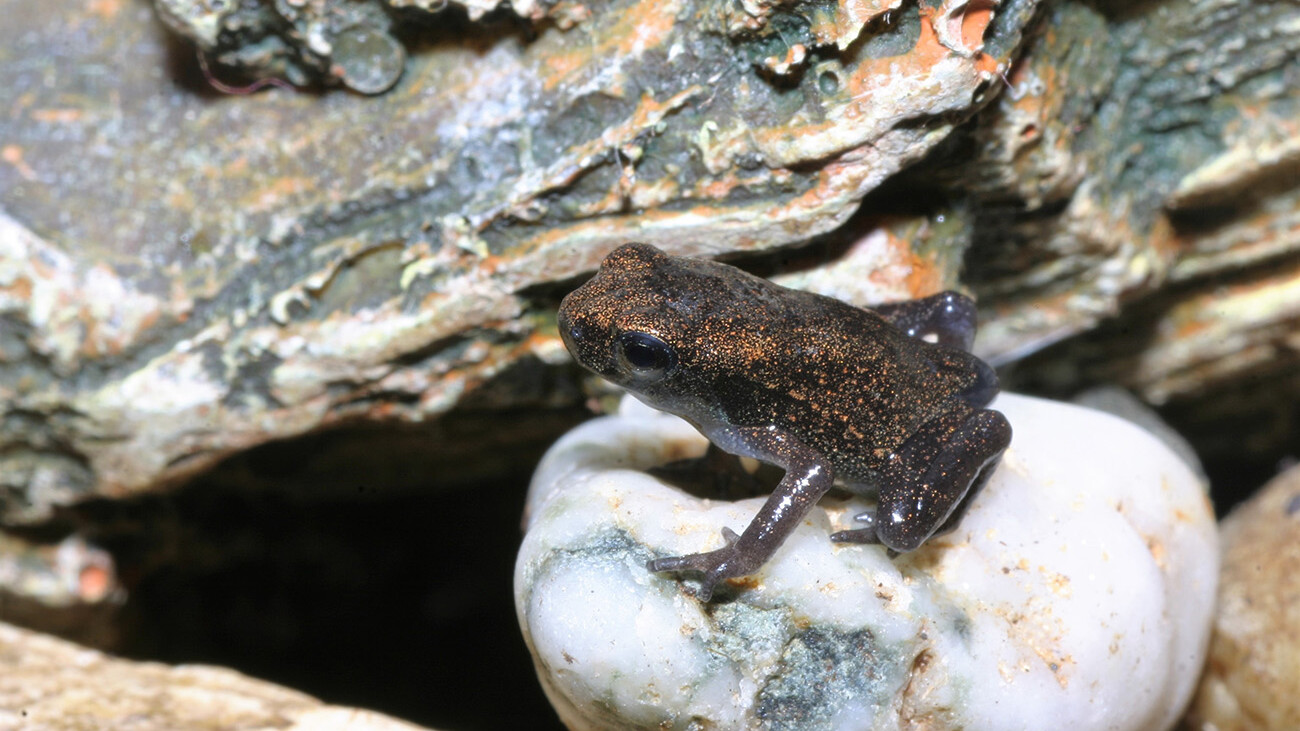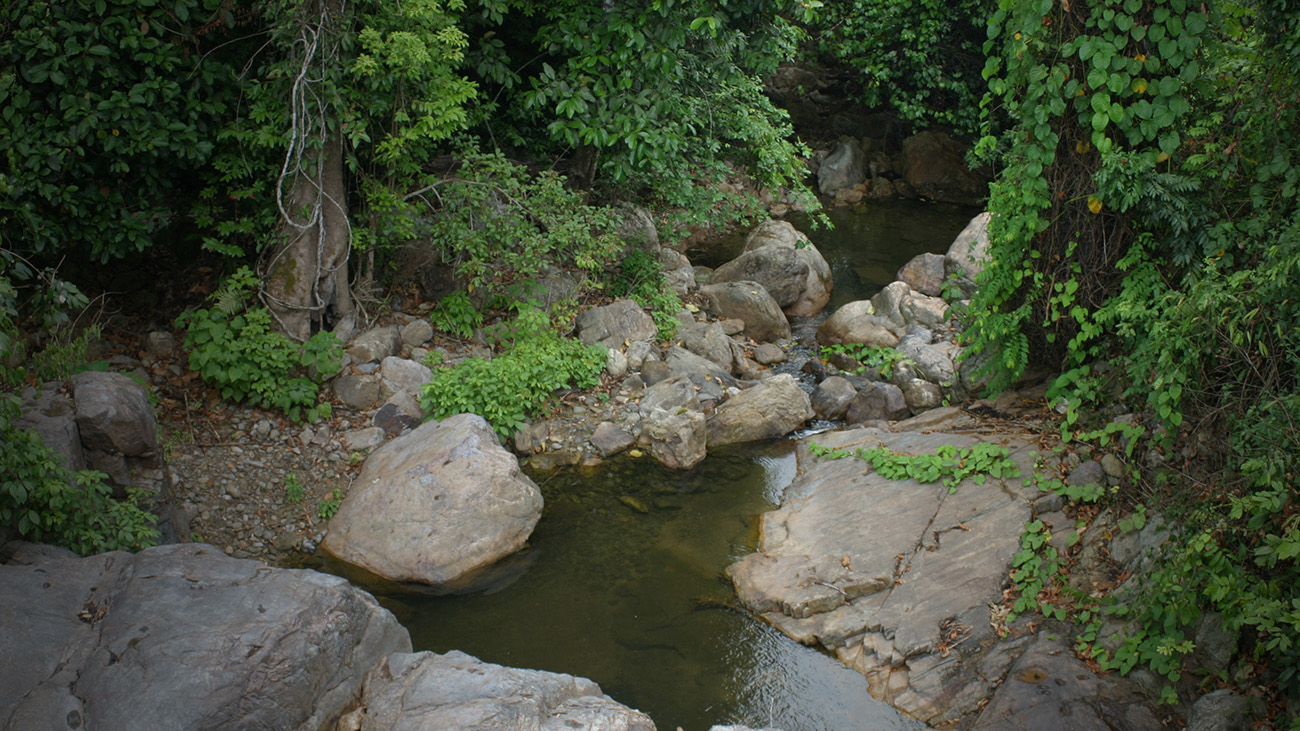Knochenkopfkröte
Ingerophrynus galeatus
Knochenkopfkröte
Ingerophrynus galeatus
Zielvorgabe CC
40 Haltende
Stand 11/2025
Zielvorgabe CC
225 Tiere
Stand 11/2025
Zielvorgabe CC
40 Haltende
Stand 11/2025
Zielvorgabe CC
225 Tiere
Stand 11/2025
Manche mögen’s nass. Die Knochenkopfkröte lebt recht eng an Wasser gebunden. Sie hüpft auf dem Boden der Tieflandregenwälder von Kambodscha und Laos über Vietnam bis in den Süden Chinas herum, immer in der Nähe von Bächen. In der Laubstreu sind die bis zu neun Zentimeter langen Kröten mit ihrem bräunlich olivfarbenen Militär-Look gut getarnt.
Echte Dickschädel
Bei dieser Kröte hat das Weibchen den Hut auf: Der deutsche Name spielt bereits auf die kräftigen Knochenkämme an, die ihren Kopf so kantig, fast wie mit einem Helm gepanzert, wirken lassen. Beide Geschlechter haben einen solchen Knochenkamm zwischen dem Auge und der großen, krötentypischen Sekretdrüse hinter den Ohren, nur bei den Weibchen ist er noch bis zur Schnauzenspitze verlängert.
Kröten der Welt
Heißhunger auf Häppchen
Für eine so handfeste Kröte ist die Nahrungsvorliebe der Knochenkopfkröte eher ungewöhnlich: Sie bevorzugt nämlich besonders kleine Futtertiere. Selbst ausgewachsene Tiere schnappen am liebsten kleine Fruchtfliegen und ähnliche Mini-Snacks , die dann mit der Krötenzunge „abgeschossen“ werden. Dafür ist ihr Appetit gewaltig. Die Kröten räumen also richtig auf unter kleinen Insekten.
Der Geschlechtsakt verläuft nach menschlichen Begriffen eher unromantisch.
Krötenliebe
Mit Beginn der Regenzeit geraten die Knochenkopfkröten in Paarungsstimmung. Dann begeben sie sich zum nächsten Gewässer, und die Männchen versuchen, die Weibchen mit Rufen anzulocken. Gelingt das, klammert das kleinere Männchen sich auf dem Rücken des Weibchens fest. In diesem sogenannten Amplexus bleiben die Tiere mitunter auch einige Tage aneinander fixiert, bis es schließlich im Wasser zur Eiablage kommt. Der eigentliche Geschlechtsakt verläuft nach menschlichen Begriffen eher unromantisch: Das Weibchen legt seine Eier in langen Laichschnüren ab, das Männchen gibt im Wasser einfach seinen Samen darüber – fertig. Alles Weitere muss der Nachwuchs von selbst schaffen.
Entwicklung vom Ei zur Jungkröte
Bitte nicht stören
Da das Verbreitungsgebiet der Knochenkopfkröte relativ groß ist, gilt die Art insgesamt noch nicht als gefährdet, auch wenn die Kröten vergleichsweise selten zu sein scheinen. Offensichtlich bewohnen sie ausschließlich ungestörte Regenwälder. Von denen gibt es in Südostasien immer weniger. In Vietnam ist die Knochenkopfkröte bereits auf der Roten Liste als „bedroht“ eingestuft. Vor allem aber ist diese kleine Kröte nur eine Art von vielen Tausenden, die auf das Ökosystem Tieflandregenwald angewiesen sind.
Natürlicher Lebensraum der Knochenkopfkröte © Thomas Ziegler
Für Haltende
Basisinformationen zu Biologie und Haltung
Die Knochenkopfkröte is auch für unerfahrene Haltende geeignet. Terrarium für ein Pärchen mindestens 60 x 40 x 40, 100 – 150 x 60 x 60 cm für eine Gruppe. Ganzjährig Temperaturen von 24 – 26 °C bei geringer Nachtabkühlung. Die Becken können attraktiv als Regenwaldterrarium mit großem Wasserteil gestaltet werden. Die Kröten sind eigentlich nachtaktiv, aber auch am Tag häufig zu beobachten. Gefressen werden kleine Futtertiere von Fruchtfliegen bis Grillen. Aufzucht der Kaulquappen mit Fischfutter.



